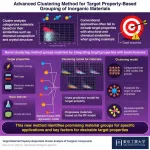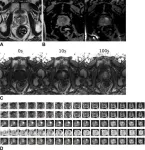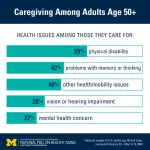(Press-News.org) Everyone wants to live to a ripe old age, but no one wants to be decrepit. Now, University of Connecticut researchers have demonstrated a treatment that could lengthen life—and vigor—up to the very end.
Even as human lifespans have lengthened over the past century, most people in old age suffer a serious health decline in the last decade of life. Chronic illnesses such as cancer, diabetes, or cardiovascular disease may begin, followed by frailty. Many interventions can prolong life, but not necessarily good health. And nobody wants to spend the last years of an extra long life in decrepitude.
But that frail decline may not be inevitable. In the Aug. 6 issue of Cell Metabolism, UConn School of Medicine gerontologist Ming Xu describes how a group of mice lived 9% longer when they received monthly treatments, or about 79 extra days of life. But the striking thing was not just that the mice lived longer, but that they could walk faster and grip objects with greater strength than untreated mice of the same age. In humans, slowed walking speed and weakened grip are tightly correlated with increased overall frailty. The treated mice retained their strength and walking speed during the whole treatment period until the very end of their lives.
The research is particularly significant because of the painstaking measurement and record keeping this project required. Most experiments on mice, health, and longevity pick a certain end point in time—18 or 24 months—and measure the effect of the treatment at that specific endpoint. But Xu, along with postdocs Binsheng Wang and Lichao Wang and their colleagues, measured the health, grip strength, and walking speed, along with a bevy of additional metrics, on the mice monthly from the time the mice were 20 months old (equivalent to 60 year old humans) until death. Some mice lived as long as 43 months. By doing this, they could assess the physical function and overall health changes of each mouse throughout the entire treatment period. Since each mouse died at a different age, this approach also allows Xu’s team to evaluate health status in the time leading up to death, which often represents the frailest and sickest stage of life.
Excitingly, they found that even though the treated mice were older at the time of death, their physical function and overall frailty were better than those of the controls during their last stage of life.
“We are all very excited about this finding, because it demonstrates that we not only extend the lifespan, but indeed extend the life with good health in mice, which is a key goal for the aging field,” says Xu, assistant professor of the UConn Center on Aging and the Department of Genetics & Genome Sciences at UConn School of Medicine.
The researchers used two groups of mice. One group received monthly treatments to remove highly inflammatory cells from their tissues; the control group did not. ‘Highly inflammatory cells’ were defined as those actively expressing a specific gene called p21.
The team, including researchers from UConn Health, The University of Texas, Cedars-Sinai, The Jackson Laboratory for Genomic Medicine, and the UNMC College of Dentistry, found the monthly treatments extended both the maximum lifespan of mice—the oldest treated mice lived to be 43 months, equivalent to about 130 years old as a human—as well as the average lifespan, so that the average treated mouse lived longer, and healthier, than the average untreated mouse.
The researchers are now working on a way to translate their results to humans. If the treatment works as well for humans, it would be equivalent to 8 to 10 additional years of healthy old age.
This research was primarily supported by the NIH National Institute on Aging, American Federation for Aging Research (AFAR), and Hevolution Foundation.
END
Live longer, die healthier
A monthly treatment can help mice not only live longer, but maintain good health and vigor into advanced old age.
2024-08-06
ELSE PRESS RELEASES FROM THIS DATE:
Novel machine learning-based cluster analysis method that leverages target material property
2024-08-06
In materials science, substances are often classified based on defining factors such as their elemental composition or crystalline structure. This classification is crucial for advances in materials discovery, as it allows researchers to identify promising classes of materials and explore new ones with similar functions and properties. A recent Advanced Intelligent Systems study led by Researcher Nobuya Sato and Assistant Professor Akira Takahashi from Tokyo Institute of Technology developed a new machine learning-powered clustering technique. This technique groups similar materials by taking into account both their ...
CT health screening can identify diabetes risk
2024-08-06
OAK BROOK, Ill. – Analysis of CT scans in people who undergo imaging for health screening can identify individuals at risk of type 2 diabetes, according to a study published today in Radiology, a journal of the Radiological Society of North America (RSNA). Researchers said the findings underscore CT’s value in opportunistic imaging—the use of information from routine imaging examinations to learn more about a patient’s overall health.
For the new study, researchers evaluated the ability of automated CT-derived markers ...
AI model effective in detecting prostate cancer
2024-08-06
OAK BROOK, Ill. – A deep learning model performs at the level of an abdominal radiologist in the detection of clinically significant prostate cancer on MRI, according to a study published today in Radiology, a journal of the Radiological Society of North America (RSNA). The researchers hope the model can be used as an adjunct to radiologists to improve prostate cancer detection.
Prostate cancer is the second most common cancer in men worldwide. Radiologists typically use a technique that combines different MRI sequences (called multiparametric MRI) to diagnose clinically significant prostate cancer. ...
Exposure to wildfire smoke may affect patients undergoing surgery
2024-08-06
CHICAGO – Nearly 100 wildfires are currently raging throughout the country, burning more than 2 million acres. The rising frequency of these fires poses a special concern for anesthesiologists – the potential for increased rates of adverse outcomes from anesthesia and surgery among patients exposed to wildfire smoke, according to a special article in the Online First edition of Anesthesiology, the peer-reviewed journal of the American Society of Anesthesiologists (ASA).
"Wildfire smoke causes inflammation and is known to worsen heart and lung disease and pregnancy outcomes," said senior author Vijay Krishnamoorthy, M.D., M.P.H., Ph. D., chief of the Critical Care ...
Visiting an art exhibition can make you think more socially and openly. But for how long?
2024-08-06
A new study by an international team of collaborators led by researchers at the University of Vienna, and in collaboration with the Dom Museum Wien, aimed to address the questions of whether art exhibitions can make us more empathic or even change our attitudes and behaviors? The researchers were able to show that, indeed, looking through the exhibition reduced xenophobia and increased acceptance of immigration. Even more, by employing a new cellphone-based experience sampling method, they could track how long ...
Heating for fusion: Why toast plasma when you can microwave it!
2024-08-06
Some believe the future of fusion in the U.S. lies in compact, spherical fusion vessels. A smaller tokamak, it is thought, could offer a more economical fusion option. The trick is squeezing everything into a small space. New research suggests eliminating one major component used to heat the plasma, freeing up much-needed space.
Scientists at the U.S. Department of Energy’s (DOE) Princeton Plasma Physics Laboratory (PPPL), the private company Tokamak Energy and Kyushu University in Japan have proposed a design for a compact, spherical fusion pilot plant ...
Nudges fail to motivate vaccination
2024-08-06
One popular strategy to motivate people to get vaccinated is the nudge—a message designed to take advantage of human tendencies to conform to social norms, seek to protect loved ones or community, and to prefer treatments with high efficacy rates. Jiseon Chang and colleagues sought to assess the efficacy of such nudges in real world contexts during the COVID-19 pandemic. The authors paid for ads to appear on Facebook between October 2021 and January 2022, reaching almost 15 million users in Brazil, Russia, South Africa, Taiwan, ...
Caregiving: Poll reveals who’s providing care and who they’re caring for
2024-08-06
More than 1 in 4 people age 50 and older helps take care of at least one family member or friend who has a health problem or disability, a new poll finds.
And among those caregivers, the new results from the University of Michigan National Poll on Healthy Aging reveal a lot about who they are and who they’re caring for.
In all, 30% of all people in their 50s and early 60s provide care to at least one person with a health issue or disability, compared with 23% of people over 65. And 1 in 10 caregivers in their 50s and early 60s are juggling taking care of three or more people.
In ...
To predict tax revenue, look at corporate earnings
2024-08-06
To Predict Tax Revenue, Look at Corporate Earnings
States can make more accurate budget forecasts and avoid midyear cuts if they include growth in corporate earnings
AUSTIN, Texas -- In the complex task of building a state budget, much rides on the accuracy of its fiscal crystal ball: its forecast of how much tax revenue will come in to fund services during the year ahead. Forecasting errors have increased since 2001 due to revenue volatility, such as wider swings in personal income and consumer spending.
New research from Texas ...
New visual technique could advance early detection of neurodegenerative diseases
2024-08-06
MINNEAPOLIS / ST. PAUL (08/06/2024) — Researchers at the University of Minnesota, have developed a new visual diagnostic technique that can be used to advance early detection for neurodegenerative diseases like Parkinson's disease and similar diseases that affect animals, including Chronic Wasting Disease in deer.
The research is published in npj Biosensing, a peer-reviewed scientific journal published by Nature.
Named Cap-QuIC (Capillary-enhanced Quaking-Induced Conversion), researchers will now be able to distinguish infected samples with the naked eye, which makes testing ...
LAST 30 PRESS RELEASES:
Injectable breast ‘implant’ offers alternative to traditional surgeries
Neuroscientists devise formulas to measure multilingualism
New prostate cancer trial seeks to reduce toxicity without sacrificing efficacy
Geometry shapes life
A CRISPR screen reveals many previously unrecognized genes required for brain development and a new neurodevelopmental disorder
Hot flush treatment has anti-breast cancer activity, study finds
Securing AI systems against growing cybersecurity threats
Longest observation of an active solar region
Why nail-biting, procrastination and other self-sabotaging behaviors are rooted in survival instincts
Regional variations in mechanical properties of porcine leptomeninges
Artificial empathy in therapy and healthcare: advancements in interpersonal interaction technologies
Why some brains switch gears more efficiently than others
UVA’s Jundong Li wins ICDM’S 2025 Tao Li Award for data mining, machine learning
UVA’s low-power, high-performance computer power player Mircea Stan earns National Academy of Inventors fellowship
Not playing by the rules: USU researcher explores filamentous algae dynamics in rivers
Do our body clocks influence our risk of dementia?
Anthropologists offer new evidence of bipedalism in long-debated fossil discovery
Safer receipt paper from wood
Dosage-sensitive genes suggest no whole-genome duplications in ancestral angiosperm
First ancient human herpesvirus genomes document their deep history with humans
Why Some Bacteria Survive Antibiotics and How to Stop Them - New study reveals that bacteria can survive antibiotic treatment through two fundamentally different “shutdown modes”
UCLA study links scar healing to dangerous placenta condition
CHANGE-seq-BE finds off-target changes in the genome from base editors
The Journal of Nuclear Medicine Ahead-of-Print Tip Sheet: January 2, 2026
Delayed or absent first dose of measles, mumps, and rubella vaccination
Trends in US preterm birth rates by household income and race and ethnicity
Study identifies potential biomarker linked to progression and brain inflammation in multiple sclerosis
Many mothers in Norway do not show up for postnatal check-ups
Researchers want to find out why quick clay is so unstable
Superradiant spins show teamwork at the quantum scale
[Press-News.org] Live longer, die healthierA monthly treatment can help mice not only live longer, but maintain good health and vigor into advanced old age.





